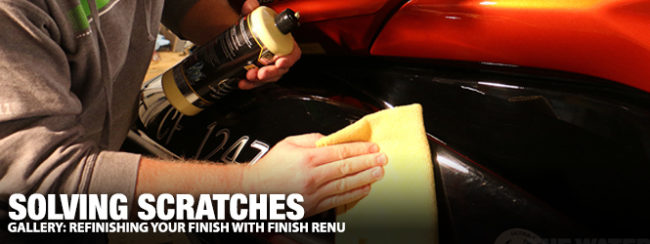
For anyone who paints cars, you’ll know that black shows everything. Every little flaw in bodywork, every shortcut in prepping the surface. You name it, black will reveal it. Heck, even if you do a shoddy job washing down you ski after a long ride, a black hull will reveal every waterspot and bit of residue you didn’t wash off. It’s too bad black looks so good, because it is just so hard to maintain. We learned this first hand this year with our long-term loaner, a 2016 Kawasaki Ultra 310X SE JetSki.
While the Candy Burnt Orange glimmered under any light, the inky black deck and hull showed every bit of dirt, grime and salt that we couldn’t (or didn’t) wash off properly. Worst of all, a year’s worth of heavy usage left the angled deck lines scuffed and gouged as one too many riders failed to slow down enough to tie up to the dock or mount the trailer bunks without a collision. One such impact with a dock left a palm-sized circular scratch on the front left corner that stuck out like a sore thumb.
Above left: Finish Renu is the parent company of PWC cleaning gurus Jet Renu, supplying industrial-grade car car products to the automotive world. Above right: Our loaner Kawasaki Ultra 310X SE has built up a lot of wear and tear, most notably a heavy scratch on the side after rubbing up to a dock a little too hard. Below: We masked off our damaged area where we were going to be working primarily to keep our buffing wheel from wandering too far. A more mindful job would’ve had us masking off the whole front of the ski so we wouldn’t need to rewash it later.
In conversation with the team from Jet Renu, we mentioned our hard luck Kawasaki and its roughed-up exterior. Immediately, they recommended their Finish Renu Renu Cut, Renu Glaze 2.0 and Banana Wax. While Jet Renu has its own line of gel coat cleaners and waxes, Jet Renu offered up their industrial body shop-grade car care products from their Finish Renu line so that we could use them on other projects for our sister publication, Mopar Connection Magazine. With our Kawasaki in dire need of some cosmetic TLC, we figured, “What the heck” and went to work with a few microfiber rags, a household electric drill, a buffing cone and a couple applicator pads.
Within an hour and a half’s time, not only were the scratches all but completely invisible, but the tuxedo-black finish of the Kawasaki was as reflective as a bathroom mirror. Over those that advertise “all-in-one,” we have found that multiple-stage buffing is worth the added time and effort as the single-bottle variety don’t offer the cutting compounds necessary, or the finalizing glazes strong enough to extract that mirror-like end result. All of Finish Renu’s products come with specific instructions to guide you through each step, to which we followed to the T.
Above left: We picked up this cone-shaped buffing wheel at our local auto parts retailer for $10, which works great with our battery-powered electric drill. Finish Renu suggests applying the Renu Cut directly to the surface, which you can see us not doing. Don’t do what we did. Below left: We made several passes with the Renu Cut as it was going to be most of the work knocking down the scratch and exposing the small cuts in the surface. Below right: The result of a few minutes of buffing with the cutting compound show how effective the Renu Cut is in smoothing the surface.
Beginning with a clean surface, we properly masked off our injured areas so that we didn’t wander with our buffing wheel too far off course. While we only masked off the area to keep us focused, a more thorough job would’ve had most of our work area masked off in case of overspray, which we definitely encountered. Because we were using an electric drill and buffing cone, we applied the Renu Cut compound (rated for 1000-grit sand scratches) directly to the surface. Because Finish Renu’s materials are a zero residue chemical, we operated at a slow speed, making concentric circles until the surface was lightly hazed.
With a microfiber cloth, we wiped the surface clean and reviewed our work. Satisfied, we moved on to step too: Renu Glaze 2.0. The gray compound removed 2500-3000 grit sand scratches, which makes it ideal for removing swirl marks on darker cars and surfaces. We first opted to apply the Renu Glaze by hand with an applicator, but found that too slow for our tastes, so our came the buffer. This not only removed the tiny etches left by the more aggressive Renu Cut, but also the deeper scratches made to the JetSki over time.
Above left: The Renu Glaze 2.0 is ideal for removing finer scratches and swirls, as well as being a great blend for darker-colored surfaces. We first applied the glaze by hand with an applicator pad and some harder pressure. We then followed up with the buffing wheel (and a little less pressure). The intermediate result was nearly enough to call it a day. Below left: The final step was applying the Banana Wax with a microfiber cloth, which rightly fills what little swirls and surface markings are left. Below right: Compare this image with the two images of the original scratch and half way through the process, and you’ll be believer as well.
Finally, we applied the polymer/carnauba blend Banana Wax. This perfectly fills what little remains of swirl marks and faint scratches, leaving a flawless, mirrored finish. We made two passes with the Banana Wax for effect, and the result was well worth it. Not only were nearly any trace of the scratches completely vanished from the black surface, but the finish look brand new. Moreover, Banana Wax won’t leave a stain or discolor mouldings, so it’s safe to make a pass over the entire vehicle.
Scratches are common on personal watercraft, but that’s no reason you have to live with them. We spent a little over an hour (including stopping to take pictures), and the end result was a near-perfect looking watercraft. We strongly suggest looking into the complete lineup of Jet Renu and Finish Renu products to find the right tools to help you keep not just your PWC, but all of your cars and toys looking new.
Above: The final result of the three-step Finish Renu process gave us a near-flawless finish that would be worthy of any showroom display.









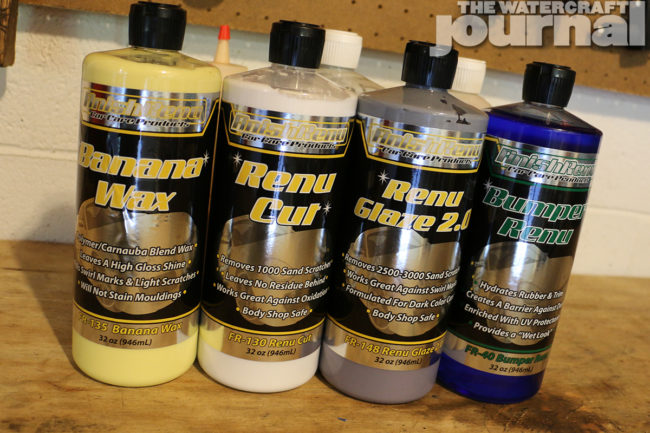
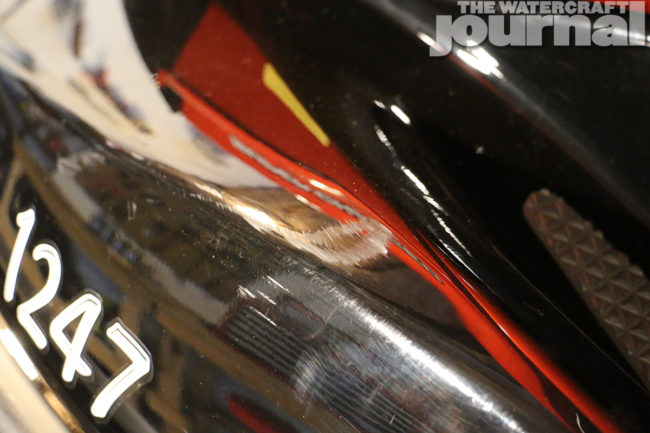

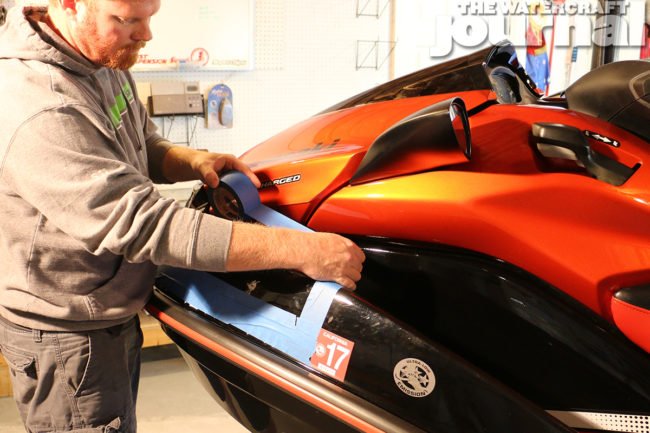

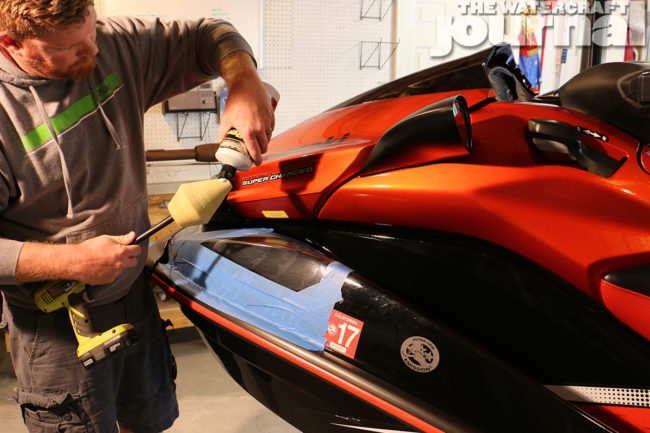
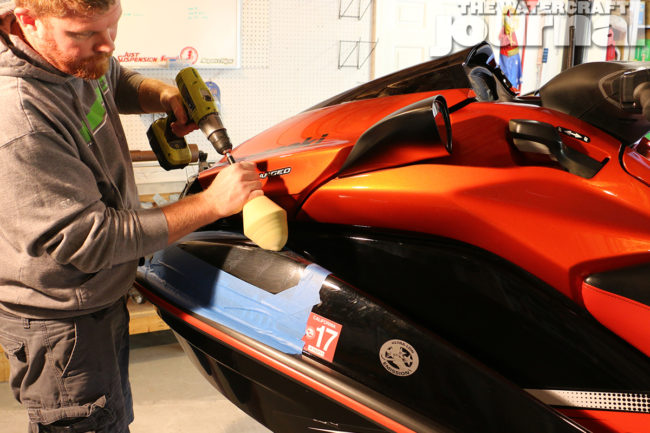
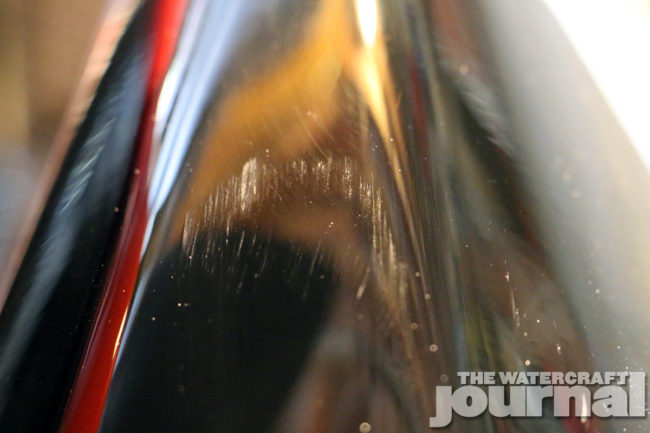
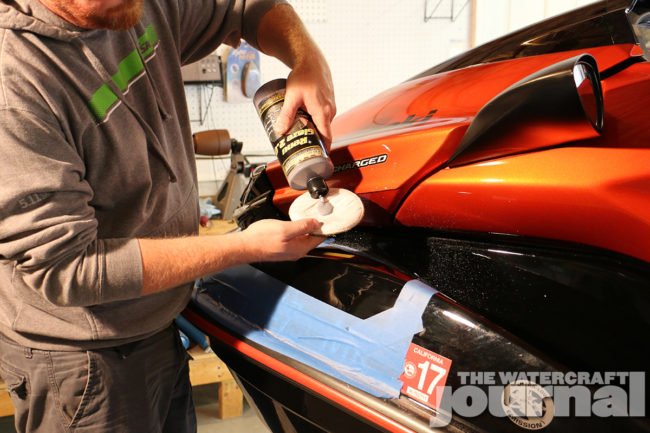
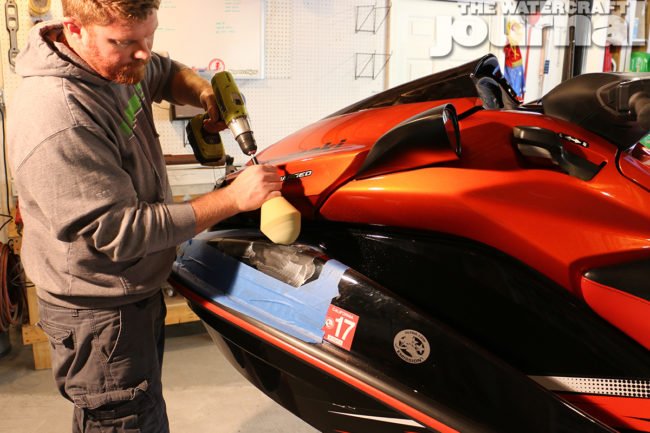

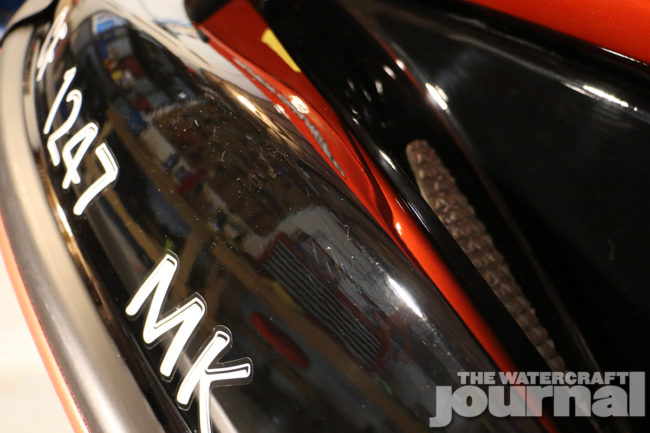
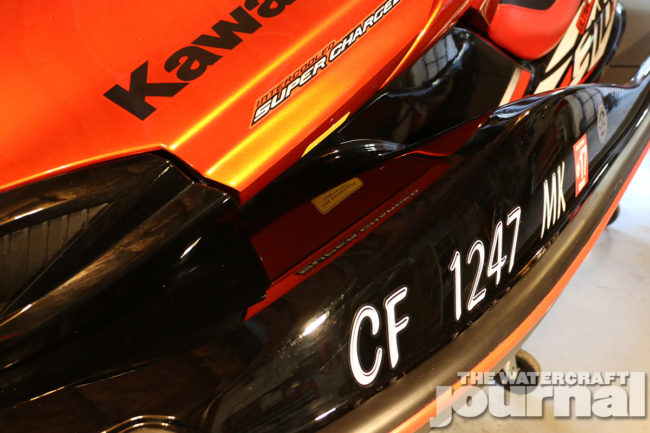


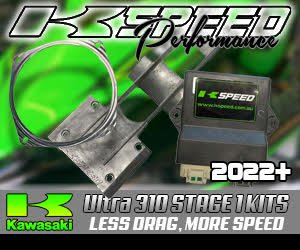





anything you can recommend for hull scratches thats available in Canada?
Kevin is there a distributor in Canada for Jet Renu?